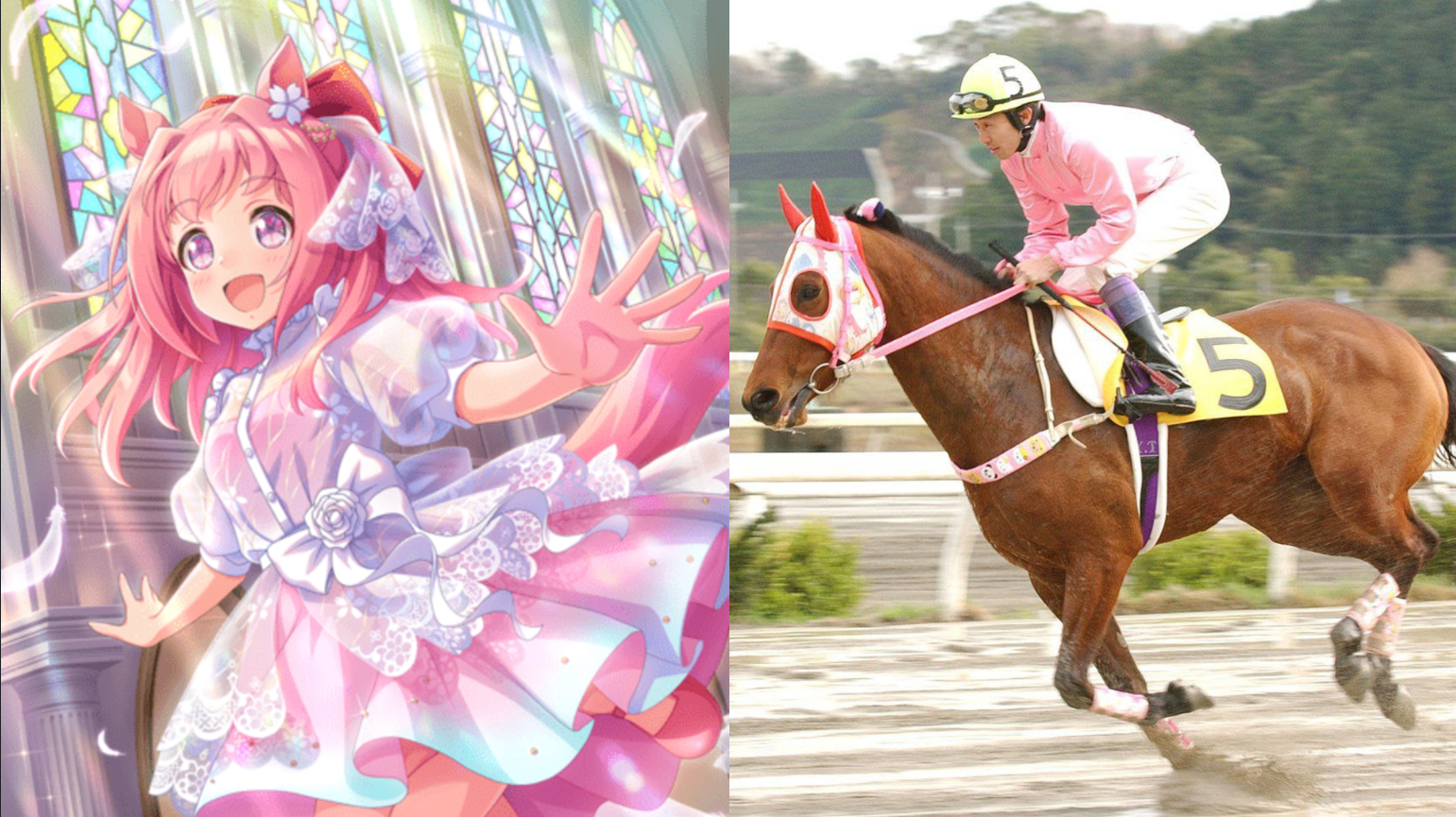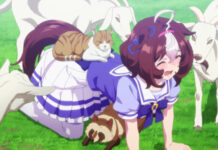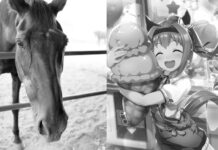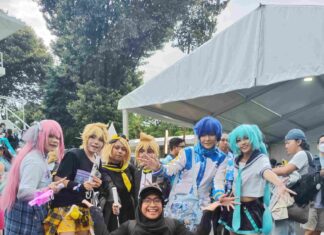Haru Urara has passed away. The sad news was confirmed by FRIDAY magazine via their X (formerly, Twitter) account on 9 September 2025 at 1530 JST. Many know her as the racehorse who never gave up, the horse who became the inspiration of a character with the same name in the Uma Musume: Pretty Derby. In the game, she’s portrayed as a cheerful, optimistic girl who never gives up despite always losing.
Before the release of the game, Haru Urara had become a national phenomenon in Japan not for her victories, but for her record-breaking streak of defeats. Haru Urara ran in 113 races without a single win, yet she became the symbol of hope for many people. She kept running, even though she never won, earning the affectionate title the Star of the Losers during Japan’s post-economic crisis era.
But behind the heartwarming legend lies a far darker and more painful reality. Haru Urara’s life was not simply a tale of perseverance. It was one of exploitation, injury, and abandonment. From the start of her career, she was pushed to race relentlessly, even while injured, only to be discarded by her owner upon retirement and nearly meet a tragic end.
Born to Lose, Forced to Run
The irony of Haru Urara’s life began at birth. She came from an impressive lineage. Her sire was Nippo Teio, a champion known as the “mile king,” and her maternal grandsire was the legendary Nijinsky. On paper, she had the pedigree of a winner.
Yet fate had other plans. Haru Urara was born small, weighing under 400 kg, and had a timid, sensitive nature with poor concentration, traits ill-suited for competitive racing. Her physical limitations made her undesirable at auction, prompting trainer Muneishi to take her to Kochi. In her debut race on 17 November 1998 at Kochi Racecourse, she finished last, a result that would define her entire career.
She was forced to race up to 20 times a year, a brutal schedule for a thoroughbred. This wasn’t driven by sporting spirit, but by economic necessity. With annual care costs reaching JPY1.3 million, the JPY60,000 appearance fee per race was the only way to break even. Even when suffering injuries, Haru Urara was made to race without rest.
In spring 2003, her original farm considered retiring her. But instead, her trainer sought a new owner so she could “keep running while she still could”, ironically prolonging her suffering.
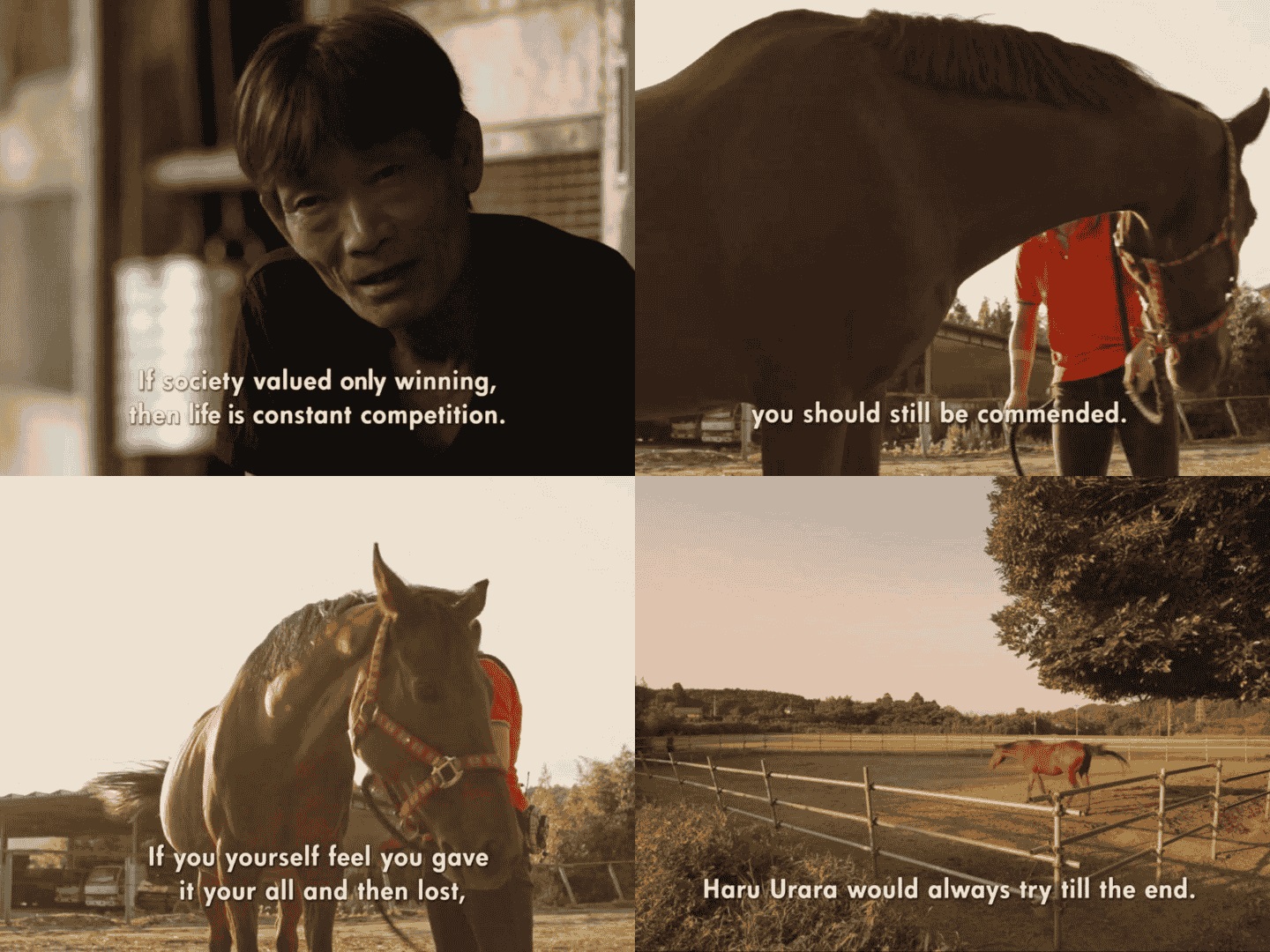
Amid her fruitless efforts, a miracle occurred, not on the track, but in public perception. Kochi Racecourse was on the brink of closure when broadcaster Koji Hashiguchi began promoting Haru Urara’s 113 consecutive losses as a unique story. The narrative of “the star of the losers” resonated deeply with recession-hit Japan. Her popularity soared, saving Kochi Racecourse from shutting down.
However, not everyone embraced the phenomenon. Her jockey, Yutaka Take, initially found the spectacle unsettling, believing it undermined the competitive spirit of horse racing.
Abandoned, Nearly Euthanised, then Saved by Fans
The most tragic chapter of Haru Urara’s life came after retirement. She was transferred to a second owner, Mihoko Anzai, who later abandoned her at Martha Farm in Chiba. Left without financial support, the farm struggled to cover her care costs and faced the heartbreaking possibility of euthanising her. The horse that once saved a racecourse was now on the brink of death, forgotten by those responsible for her well-being.
Her life was saved once more, not by the racing industry but by devoted fans. After vanishing for ten years, Martha Farm revealed her whereabouts. The announcement sparked a flood of donations from across Japan. Her fame through the game Uma Musume: Pretty Derby also garnered global support. Because of this, the farm can establish a support group called Haru Urara’s Group to ensure her peaceful retirement until her passing.
The Indonesian Anime Times | Original Article by Farrenswolf | Translation by Dany Muhammad

